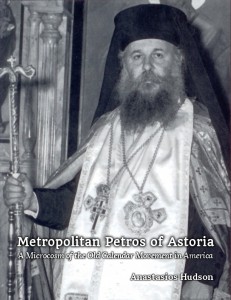The New Testament Church
When you sit down to think about it, there sure are a lot of Christian denominations: Baptists, Lutherans, Methodists, and Episcopalians, to name a few. Is this what Jesus wanted? The Bible says that Jesus is the head of the Church (Ephesians 5:23). Can a head be a head to more than one body? Some have come up with a theory that the Church must refer to all the saved Christians on the earth at one time. Yet the Bible also says that the Church is the “pillar and foundation of the truth” (1 Timothy 3:15). If the Church is an invisible group of all the saved Christians, then where is there a pillar or a foundation that we can look at for guidance? This would lead to a lot of confusion, for sure. We’d have to go and ask each minister we knew, and they might give different answers. In the end, we’d have to rely on our judgment: but what if we are wrong?
Some claim that they are “Non-Denominational.” While the idea of not being a denomination is a good start, it’s pretty obvious that most Churches which claim to not belong to any denomination look a lot like your average Baptist or Evangelical Church. It’s very rare, for instance, to see a Non-Denominational Church that looks Roman Catholic. Changing the sign on the door doesn’t restore us to the original, pre-denominational Church. The question we might ask is then: what was the Church like in the early days right after Jesus, in the New Testament? And does that Church still exist?
Returning to the Bible, we see that the Church was started on Pentecost, when the Holy Spirit descended upon the Apostles and they went out to preach (Acts 2). 3000 people were converted and baptized that day. St. Paul travelled and converted many people. He wrote them letters, and those letters became books of the New Testament, the second half of the Bible. He also told them things verbally, and expected them to honor his oral traditions: “So then, brothers, stand firm and hold to the teachings we passed on to you, whether by word of mouth or by letter” (2 Thessalonians 2:15).
After the Apostles died, what happened next? For instance, if there was a problem or a dispute, who settled it? Correct doctrine was certainly important; leaving aside the correct teaching about Christ was considered to be leaving God (2 John 1:7-11). Did they turn to their Bibles for the answer? Besides the fact that most people could not read then, the Bible was not all together in one place at that time. Certainly, the Old Testament Scriptures were collected in scrolls, but the Gospels and Epistles were still being circulated and collected. There were also some false Gospels and Epistles that taught incorrect things about God. In fact, the Bible contains no divine “Table of Contents” at all! It was only in 393 AD at the Council of Hippo that the bishops assembled agreed on the official list of books of the Bible! The criteria they used was comparing what Epistles and Gospels had been collected in each local Church they served, and which had been read in the Sunday service continuously. An ancient saying went, “what you pray, is what you believe.”
To people used to the idea that the Bible is the only source of authority for the Christian, this fact might seem scary at first. But it really isn’t: as we mentioned above, the Bible says that the Church is the pillar and foundation of the truth. Looking at history, we see that the Apostles selected overseers (bishops) to succeed them and maintain order. A well-known example mentioned in the Bible is Timothy. These bishops continued to select people to succeed them, as an early Christian writer recorded (Ireneus in his work Against Heresies in the second century, for instance). This is referred to as “apostolic succession”: the apostles chose successors who chose successors down to the present day. As each bishop was selected, he made a public profession of faith, and was entrusted with the written letters of the Apostles and the oral traditions that had been passed down to his predecessor, and which had been publicly taught in the assembly of prayer. This public succession prevented people from claiming they had a secret teaching about God or that they had secretly been made bishops. When there were regional problems, the bishops of each local church would meet together in councils, such as Hippo in 393 which confirmed the proper list of books of the Bible.
This succession of bishops continues to this day: in the Orthodox Church. All Orthodox priests and bishops have been ordained by bishops that can be traced back to the Apostles. Apostolic succession is an important link confirming that the New Testament Church is alive today, because the succession of bishops is older than the Bible itself! The Orthodox Church has not been founded by any individual, such as Lutherans being founded by Luther, or Baptists being founded by John Smyth. These Churches do not have proper apostolic succession. The Roman Catholics have a physical line of bishops, but they have changed doctrines over time, and separated from the majority of other bishops in 1054 over the issue of the Pope.
The Orthodox Church is the original Christian Church, which has faithfully preserved the doctrine and practices of the Early Church. In this day, many are looking to rediscover the New Testament Church, and are often surprised to learn that it has been there all along. Orthodoxy is not just another denomination, but is pre-denominational. If you’ve ever wondered what happened after the Apostles or what the Church looked like in 200 AD, 500 AD, or 1300 AD, come worship with us and get a glimpse at the Church as it has existed throughout all ages.


